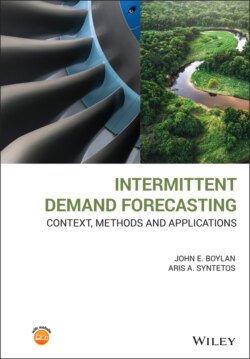Читать книгу Intermittent Demand Forecasting - John E. Boylan - Страница 83
3.6.1 Unit Fill Rates
ОглавлениеThe basic unit fill rate calculation is straightforward. For example, if in a particular period we satisfy three units out of four demanded directly from stock, then the fill rate is 75%. Let us now consider an example of four periods with each period showing some demand, as shown in Table 3.6.
How should we define the overall fill rate? There are two possible approaches. The first is to total the satisfied demand (8 units) and divide by the total demand (16 units) to give an overall fill rate of 50%, as shown in Table 3.6. The second approach is to average the fill rates over all four periods, giving an overall fill rate of 56.25%, which is somewhat higher than the first calculation. If all four periods had a fill rate of 50%, then the two calculation methods would agree. The disagreement arises because the average of the fill rates in the second and third periods is 62.5%, whereas only 50% of the total demand over these two periods is fulfilled. The second method can be applied to intermittent demand only if periods with zero demands are excluded from the calculation. For further discussion of this method, please refer to Guijarro et al. (2012). We will base our analysis on the first method, as it is simpler for intermittent demand, and is the standard method in the literature and in practice.
Table 3.6 Fill rates per time period.
| Period | Demand | Satisfied | Fill rate |
|---|---|---|---|
| 1 | 2 | 1 | 0.50 |
| 2 | 4 | 1 | 0.25 |
| 3 | 2 | 2 | 1.00 |
| 4 | 8 | 4 | 0.50 |
| Total | 16 | 8 | 0.50 |
